HAYDN AT ESTERHÁZA |
| | |
The song has to have a good beat and a good match between lyrics and the tune. You should be able to sing along and know what the song is saying. Listen to “Blue Skies,” another song by Berlin (1926), an addition to the Rogers and Hart musical Betsy.
| | |
As Oscar Hammerstein II once remarked, “‘Star Dust’ rambles and roams like a school boy in a meadow….yet it has attained popularity that few songs can claim. What has it got? I’m not certain. I know that it is beautiful and I like to hear it.”
Songs that become the bedrock of jazz possess a timelessness that touches millions across different demographics. Successful tunes evoke the era in which they were written and resonate for years to come. The “Golden Era of Songs” (1920-1950) included the compositions of composers like Irving Berlin, Cole Porter, George and Ira Gershwin, and Johnny Green. Here is a song by Jerorme Kern that became a jazz standard entitled “Yesterdays” from the musical Roberta (1933). The melody is haunting whether sung by Ella Fitzgerald or played on the trumpet of Wynton Marsalis.
| | |
The word “jazz” was probably derived from the slang “jasm” that meant energy, vitality, spirit, pep. An academic definition of jazz is a genre of American music that originated in New Orleans, circa 1900, characterized by strong prominent meter, improvisation, distinctive tone colors, performance techniques, and dotted or syncopated rhythmic patterns.
This uniquely American music has all the elements that other music has including melody, a tune or song you will remember; rhythm, the heartbeat of a song that includes syncopation and swing notes; harmony, simultaneous sounding of notes; plus a spontaneous creation of music called improvisation. Jazz is a collective art of creation. Even though a soloist does the improvising, that musician is supported by members of the rhythmic section, called “comp.”
Here are two different interpretations of Johnny Green’s “Body and Soul” from Three is a Crowd. Note how the beauty of the song is never lost.
This uniquely American music has all the elements that other music has including melody, a tune or song you will remember; rhythm, the heartbeat of a song that includes syncopation and swing notes; harmony, simultaneous sounding of notes; plus a spontaneous creation of music called improvisation. Jazz is a collective art of creation. Even though a soloist does the improvising, that musician is supported by members of the rhythmic section, called “comp.”
Here are two different interpretations of Johnny Green’s “Body and Soul” from Three is a Crowd. Note how the beauty of the song is never lost.
| | |
A jazz standard is a composition that is held in continuing esteem and is commonly used as a basis of jazz arrangements. Jazz standards evolve when a musician transforms a song through improvisation. It becomes a standard when enough other musicians do a replay. A dialogue with past great tunes occurs as tradition is reinvented. Simply said, you take a good song and make it say something new.
Earlier we listened to the song “Blue Skies” with its memorable melody, catchy rhythms, and simple chordal patterns. Thelonious Monk took the “Blue Skies” chord pattern and used it in his song “In Walked Bud” (1947), which is a classic Monk tune for many jazz musicians. In pianist Fred Hersch’s interpretation of “In Walked Bud,” that same chord pattern is reinvented once again, expressing something new.
Earlier we listened to the song “Blue Skies” with its memorable melody, catchy rhythms, and simple chordal patterns. Thelonious Monk took the “Blue Skies” chord pattern and used it in his song “In Walked Bud” (1947), which is a classic Monk tune for many jazz musicians. In pianist Fred Hersch’s interpretation of “In Walked Bud,” that same chord pattern is reinvented once again, expressing something new.
| | |
There is extensive crossover between show tunes and jazz standards. Many jazz musicians played in the orchestra pits of Broadway theaters. Many composers of the period were writing in jazz style. And we can’t ignore the popularity of radio and the recording industry in spearheading the growth of jazz standards.
No jazz conversation can close without acknowledging the jazz inspired lullaby “Summertime,” from the opera Porgy and Bess, by composer George Gershwin, libretto by Du Bose Heyward, and lyricist Ira Gershwin. That song has been performed in every genre from its original aria format, through rock and roll, to disco and reggae. But there is no rendition that will more quickly bring tears to your eyes than listening to it sung by either Leontyne Price or Renee Fleming.
No jazz conversation can close without acknowledging the jazz inspired lullaby “Summertime,” from the opera Porgy and Bess, by composer George Gershwin, libretto by Du Bose Heyward, and lyricist Ira Gershwin. That song has been performed in every genre from its original aria format, through rock and roll, to disco and reggae. But there is no rendition that will more quickly bring tears to your eyes than listening to it sung by either Leontyne Price or Renee Fleming.
| | |
In jazz, the performers themselves are responsible for the musical matter through improvisation or orchestration. Creative and interpretive music become one. No matter the source of the song, be it Tin Pan Alley, Broadway, Hollywood films, traditional folk, gospel songs, Rock and Roll, or international folk and popular songs, the success of the musical matter lies in the hands of the performers.
Tune in to Grass Roots TV, channel 12, on November 19 at 5:30 pm to watch Broadway to Jazz, the next Music FROM the Library performance. This concert will also be available to view on YouTube and Facebook following the Thursday broadcast.
Tune in to Grass Roots TV, channel 12, on November 19 at 5:30 pm to watch Broadway to Jazz, the next Music FROM the Library performance. This concert will also be available to view on YouTube and Facebook following the Thursday broadcast.
What’s in a name—pianoforte, fortepiano, piano? We can all agree that it is a keyboard instrument whose mechanism involves hammers, originally covered with leather, now felt, that strike the strings. Its mechanism differs from its forerunner the clavier, an instrument whose strings are struck by small metal hammers, or the harpsichord whose strings are plucked by crow or turkey quills, now made of delrin.
The piano, an eighteenth century invention, evolved through lots of experimentation with mechanisms to produce a functioning instrument. The Italian Bartolomeo Cristofori (1655-1731) is considered the inventor of the piano as we know it today. He called his instrument Clavicembalo col Piano e Forte (keyboard with soft and loud, depending on the force used to strike keys). Because the instrument had the ability to sustain tone and gradations of volume, it quickly gained popularity. By 1768, the piano was used as a solo instrument in concert performances. Three instruments built by Christofori exist in museums today.
To hear the sound of one of these instruments, watch this:
The piano, an eighteenth century invention, evolved through lots of experimentation with mechanisms to produce a functioning instrument. The Italian Bartolomeo Cristofori (1655-1731) is considered the inventor of the piano as we know it today. He called his instrument Clavicembalo col Piano e Forte (keyboard with soft and loud, depending on the force used to strike keys). Because the instrument had the ability to sustain tone and gradations of volume, it quickly gained popularity. By 1768, the piano was used as a solo instrument in concert performances. Three instruments built by Christofori exist in museums today.
To hear the sound of one of these instruments, watch this:
Now, listen to Barenboim play the same sonata on a modern piano:
As you may recall from earlier blog posts, Beethoven moved to Vienna in 1792 and made his mark in the city, first as a pianist, then a composer. During Beethoven’s Viennese days, the piano drastically changed in character depending on the builder. According to Chris Maene, Belgian piano and harpsichord manufacturer, Beethoven played seven different fortepianos built by Stein(1786), Walter (1795), Erard (1803), Fritz (1811), Streicher (1814), Broadwood (1817), and Graf (1826). Distinct differences in touch, feel, power, and color can be drawn between instruments depending on their maker. These pianos offered specific opportunities and limitations, and the above elements affected the way Beethoven composed for each instrument.
To view photos and descriptions of these pianos, read this article from Pianist Magazine.
In his last decade of life, Beethoven owned two pianos, one built by Broadwood of London and one by Graf of Vienna. Viennese pianos possessed light and speedy keyboard action, allowing rapid execution of notes in clear sharp tones. English pianos had a more powerful sonority: rich, solid, robust resonance. Beethoven’s late sonatas Op 109, 110, and 112, plus Hammerklavier, clearly reflect both a spirit and drama that assures us that he took full advantage of the range and capacities these instruments offered.
To more clearly understand and appreciate the sound of the instruments built for and played by Beethoven, please listen to David Breitman perform Sonata No 15 on a replica of the Walter instrument.
To view photos and descriptions of these pianos, read this article from Pianist Magazine.
In his last decade of life, Beethoven owned two pianos, one built by Broadwood of London and one by Graf of Vienna. Viennese pianos possessed light and speedy keyboard action, allowing rapid execution of notes in clear sharp tones. English pianos had a more powerful sonority: rich, solid, robust resonance. Beethoven’s late sonatas Op 109, 110, and 112, plus Hammerklavier, clearly reflect both a spirit and drama that assures us that he took full advantage of the range and capacities these instruments offered.
To more clearly understand and appreciate the sound of the instruments built for and played by Beethoven, please listen to David Breitman perform Sonata No 15 on a replica of the Walter instrument.
Or Malcolm Bilson performing the first movement of the Tempest.
Or Beethoven’s’ Moonlight Sonata (Anton Walter by Paul McNulty).
Then listen to Murray Perahia performing Beethoven’s Moonlight Sonata, 3rd movement, performed on a modern piano.
As performers, are we obliged to simply play the notes on the page and follow signs of instructions, such a dynamic and pedaling, or do we need to consider the limitations of the instruments dating from the particular period during which the composition was written? Does that knowledge enlighten us as we attempt to communicate that composer’s music to our audiences?
On Thursday, October 15, Grass Roots TV will broadcast our next Music From the Library concert with Amanda Gessler performing Beethoven’s Piano Sonatas Op 109 and 111. Amanda has engaged in scholarly exploration of Beethoven scores—the notes, the dynamic markings, and pedaling—and she has studied with internationally known teachers, most recently Richard Goode of New York.
Amanda’s sharing of her musical talent and knowledge of Beethoven’s music will bring joy to your ears. Tune in to Grass Roots TV, channel 12, to watch the concert on October 15 at 5:30PM. This concert will also be available to view on YouTube and Facebook following the Thursday broadcast.
On Thursday, October 15, Grass Roots TV will broadcast our next Music From the Library concert with Amanda Gessler performing Beethoven’s Piano Sonatas Op 109 and 111. Amanda has engaged in scholarly exploration of Beethoven scores—the notes, the dynamic markings, and pedaling—and she has studied with internationally known teachers, most recently Richard Goode of New York.
Amanda’s sharing of her musical talent and knowledge of Beethoven’s music will bring joy to your ears. Tune in to Grass Roots TV, channel 12, to watch the concert on October 15 at 5:30PM. This concert will also be available to view on YouTube and Facebook following the Thursday broadcast.
The Lenore Raphael Quartet will combine sounds of jazz piano, bass, drums, and vibes in the kickoff virtual concert for the Basalt Regional Library, broadcast by Grass Roots TV on September 24, 2020 at 5:30 pm.
I’m sure we’re all familiar with piano, bass, and drums. But the vibraphone?
The history of the vibraphone is interesting, since it is a relatively young mallet instrument, first created by Herman Winteroff in the USA in the early 1920’s. He took a marimba with steel bars, and connected a motor to the cover disks at the upper end of the resonators by means of a spindle to create a ‘vox humane’ or tremelo sound to the instrument. Later a Chicago firm, Deagon, added a damper pedal and adjustable vibration speed. Relatively few changes have been made to the instrument since 1927.
To successfully perform on this instrument, one has to develop a four mallet technique (two mallets in each hand), mallet dampening (attack/release), pedal technique, and develop extensive knowledge of harmonic progressions in order to bring out melodic lines, improvise, etc. The vibraphone is used as a lead or improvisational instrument in ensembles.
Vaudeville and jazz are responsible for the initial popularity of this instrument. Lionel Hampton (1909-2002) a pianist, drummer known for his double stick tricks, and vibraphonist was first in line to use vibes in his band. When Louis Armstrong (1898-1971) heard Lionel and his California band, he fell in love with the sound and asked Lionel to accompany him on several recordings. During a 1930 recording session, Lionel was asked to improvise vibraphone solos. From that point on, vibraphone was Lionel’s main focus.
The vibraphone’s sweeping success in jazz was next passed to Benny Goodman (1901-1989) who added the instrument to his orchestra. Soon the vibraphone was heard in jazz sextets, quartets, and dance bands all around the country. For a detailed account of vibraphonists and more history about the instrument, read and listen to “Feeling the Vibes: The Short History of a Instrument” from NPR’s Take Five: A Jazz Sampler series.
When listening to NPR’s suggested recordings, note the differences in the performance styles of Lionel, Armstrong, Milt Jackson, Gary Burton, Bobby Hutcherson, and Stefon Harris.
Jazz was responsible for the initial popularity of the vibraphone, but it has found footing in repertoire for orchestra, wind ensemble, and percussion ensemble. Many composers have written compositions for solo vibraphone as well.
Darius Milhaud’s Concerto for Marimba, Vibraphone and Orchestra, Op. 278 (1947) is an electrifying composition that affords its listeners the opportunity to hear the contrast of color/timbre between the two mallet instruments, the marimba and vibraphone. I recommend the following YouTube performances for listening/viewing, although the video is somewhat blurred.
I’m sure we’re all familiar with piano, bass, and drums. But the vibraphone?
The history of the vibraphone is interesting, since it is a relatively young mallet instrument, first created by Herman Winteroff in the USA in the early 1920’s. He took a marimba with steel bars, and connected a motor to the cover disks at the upper end of the resonators by means of a spindle to create a ‘vox humane’ or tremelo sound to the instrument. Later a Chicago firm, Deagon, added a damper pedal and adjustable vibration speed. Relatively few changes have been made to the instrument since 1927.
To successfully perform on this instrument, one has to develop a four mallet technique (two mallets in each hand), mallet dampening (attack/release), pedal technique, and develop extensive knowledge of harmonic progressions in order to bring out melodic lines, improvise, etc. The vibraphone is used as a lead or improvisational instrument in ensembles.
Vaudeville and jazz are responsible for the initial popularity of this instrument. Lionel Hampton (1909-2002) a pianist, drummer known for his double stick tricks, and vibraphonist was first in line to use vibes in his band. When Louis Armstrong (1898-1971) heard Lionel and his California band, he fell in love with the sound and asked Lionel to accompany him on several recordings. During a 1930 recording session, Lionel was asked to improvise vibraphone solos. From that point on, vibraphone was Lionel’s main focus.
The vibraphone’s sweeping success in jazz was next passed to Benny Goodman (1901-1989) who added the instrument to his orchestra. Soon the vibraphone was heard in jazz sextets, quartets, and dance bands all around the country. For a detailed account of vibraphonists and more history about the instrument, read and listen to “Feeling the Vibes: The Short History of a Instrument” from NPR’s Take Five: A Jazz Sampler series.
When listening to NPR’s suggested recordings, note the differences in the performance styles of Lionel, Armstrong, Milt Jackson, Gary Burton, Bobby Hutcherson, and Stefon Harris.
Jazz was responsible for the initial popularity of the vibraphone, but it has found footing in repertoire for orchestra, wind ensemble, and percussion ensemble. Many composers have written compositions for solo vibraphone as well.
Darius Milhaud’s Concerto for Marimba, Vibraphone and Orchestra, Op. 278 (1947) is an electrifying composition that affords its listeners the opportunity to hear the contrast of color/timbre between the two mallet instruments, the marimba and vibraphone. I recommend the following YouTube performances for listening/viewing, although the video is somewhat blurred.
As you listen/view, be aware of the demanding four mallet technique, plus dexterity, required for performing this piece. And don’t forget you have a pedal to control as well!
For solo vibraphone repertoire, I suggest listening/viewing a composition entitled Blues for Gilbert by Mark Glentworth—a truly soothing and beautiful sound that will erase your tensions of the day.
For solo vibraphone repertoire, I suggest listening/viewing a composition entitled Blues for Gilbert by Mark Glentworth—a truly soothing and beautiful sound that will erase your tensions of the day.
I hope this history of the vibraphone will enhance your enjoyment of the Lenore Raphael Quartet virtual performance of songs from the Great American Songbook, including blues, ballads, and up-tempo jazz classics.
As always,
Charlotte McLain
As always,
Charlotte McLain
"Applaud my friends, the comedy is over..." - On his death bed, Ludwig van Beethoven
During the years 1825-26, Beethoven was in failing health, but he creatively engaged in composing five of the most complex string quartets, plus the Grosse Fugue, recognized at the time.
As opined by Maynard Solomon in Beethoven Essays, “This creativity may have served to ward off death, a counterbalance to the forces of disintegration.” These quartets Op. 127, 130,131,132, 133 (Grosse Fugue), and Op. 135 were received with bewilderment by many. A recorded quote by one musician summarized the bewilderment this way, “We know there is something there, but do not know what it is.”
After listening to Op. 131, Schubert exclaimed, “After this, what is left for us to write?” Wagner declared of the first movement of Op 131, “It reveals the most melancholy sentiment expressed in music.” Stravinsky said of the Grosse Fugue, “An absolutely contemporary piece of music that will be contemporary forever.”
As I started writing this closing Beethoven blog, it quickly became apparent to me that any comments I might make about any one of these compositions would be superficial and less than inspiring. These works are mystical, poetic, improvitory, complex, simple, full of intense contrast, sublime—all the above.
Upon examination of the late string quartets of Beethoven, the element of contrast seems to dominate. Whether it’s contrast in general character, tempos, dynamics, or texture, the contrasts are dramatic. To illustrate contrast in the overall character of the composition, I think we should compare and contrast Op.131 and 135.
String Quartet No. 14 in C sharp minor Op. 131 (1826) seems the most mystical of the quartets. Within the seven connected sections, there are twenty tempo changes. Its structural form alone classifies it as “music for another era.” Its somber key C sharp minor prevails, but the other keys Beethoven explores are quite adventurous.
If we were to choose a lighter quartet of the period, it would probably be String Quartet No. 16 in F major Op. 135 (1826), sometimes referred to as the good natured Falstaff quartet. I challenge you to try tapping your foot in the rhythmically, harshly dissonant scherzo.
To enhance your understanding of these quartets, I encourage you to go on YouTube and listen to the Chamber Music Society of Lincoln Center lectures entitled “The Beethoven Cycle” given by Michael Parloff. Whether you are a musician or a person with deep music appreciation, you will find these lectures give new and exciting insight to some of the greatest music ever written.
Michael Parloff’s Lecture on Beethoven Quartets Op. 131 & Op. 135:
As opined by Maynard Solomon in Beethoven Essays, “This creativity may have served to ward off death, a counterbalance to the forces of disintegration.” These quartets Op. 127, 130,131,132, 133 (Grosse Fugue), and Op. 135 were received with bewilderment by many. A recorded quote by one musician summarized the bewilderment this way, “We know there is something there, but do not know what it is.”
After listening to Op. 131, Schubert exclaimed, “After this, what is left for us to write?” Wagner declared of the first movement of Op 131, “It reveals the most melancholy sentiment expressed in music.” Stravinsky said of the Grosse Fugue, “An absolutely contemporary piece of music that will be contemporary forever.”
As I started writing this closing Beethoven blog, it quickly became apparent to me that any comments I might make about any one of these compositions would be superficial and less than inspiring. These works are mystical, poetic, improvitory, complex, simple, full of intense contrast, sublime—all the above.
Upon examination of the late string quartets of Beethoven, the element of contrast seems to dominate. Whether it’s contrast in general character, tempos, dynamics, or texture, the contrasts are dramatic. To illustrate contrast in the overall character of the composition, I think we should compare and contrast Op.131 and 135.
String Quartet No. 14 in C sharp minor Op. 131 (1826) seems the most mystical of the quartets. Within the seven connected sections, there are twenty tempo changes. Its structural form alone classifies it as “music for another era.” Its somber key C sharp minor prevails, but the other keys Beethoven explores are quite adventurous.
If we were to choose a lighter quartet of the period, it would probably be String Quartet No. 16 in F major Op. 135 (1826), sometimes referred to as the good natured Falstaff quartet. I challenge you to try tapping your foot in the rhythmically, harshly dissonant scherzo.
To enhance your understanding of these quartets, I encourage you to go on YouTube and listen to the Chamber Music Society of Lincoln Center lectures entitled “The Beethoven Cycle” given by Michael Parloff. Whether you are a musician or a person with deep music appreciation, you will find these lectures give new and exciting insight to some of the greatest music ever written.
Michael Parloff’s Lecture on Beethoven Quartets Op. 131 & Op. 135:
For listening to these quartets, l recommend Alan Berg Quartet:
In response to the pandemic, all of us have been forced to alter our lifestyle. But keeping music in our lives can bring joy and consolation to all of us during times of change and uncertainty. I hope this series of blog posts concerning the music of Beethoven’s genius has provided both for you. It has provided me the opportunity to re-examine works and renew my appreciation for the genius, Ludwig van Beethoven.
“I wish you music to help with the burdens of life and to help you release your happiness to others." - Quote from a letter, Ludwig van Beethoven
Be safe and stay well,
Charlotte McLain
“I wish you music to help with the burdens of life and to help you release your happiness to others." - Quote from a letter, Ludwig van Beethoven
Be safe and stay well,
Charlotte McLain
During the early years of residence in Vienna, Beethoven managed to establish himself as a rising pianist and composer with the music loving nobility. Among this nobility was Count Razumovsky, Russian ambassador to Vienna and musical amateur. Razumovsky had an incredible concert hall for performances in his palace, White Hall, plus a resident private string quartet that was at Beethoven’s disposal for composition experimentation.
In 1805 the Count commissioned Beethoven to write three quartets, which became known as the Razumovsky quartets. These quartets were intended for professional performers, not for amateurs. Their complexity took those who encountered them to unexpected musical places. Beethoven described the Razumovsky quartets as “music for a late age.”
It’s hard to choose just one Razumovsky quartet as a favorite because they’re all unique, wonderful compositions, but finally I chose to focus on String Quartet No. 9 in C major, Op. 59, No 3 (1808) as focus for this blog.
The first movement opens with a slow, somber, dissonant introduction which leads to the bright, cheerful allegro in C major.
The second movement makes use of a descending scale that alludes to a Hungarian scale reminding us of Bartok’s sounds. Razumovsky Quartet No. 3 does not have an explicit ‘Theme Russe’ as appears in No. 1 and No. 2, but the comfortless melodies of this movement evoke a Russian feel—vast and desolate landscapes of the Siberian tundra.
The third movement is a light minuetto trio that provides great contrast to the fugal allegro of the fourth movement. The character of the fourth movement is truly perpetual motion ending with a Mannheim crescendo FFF!
During this same time frame, Beethoven wrote two other string quartets—Op. 74, nicknamed “Harp,” and Op. 95. My colleague, friend, and violist, Jalen Lee, told me that she had performed the “Harp” and agreed to share some thoughts concerning this composition.
She wrote:
It’s hard to choose just one Razumovsky quartet as a favorite because they’re all unique, wonderful compositions, but finally I chose to focus on String Quartet No. 9 in C major, Op. 59, No 3 (1808) as focus for this blog.
The first movement opens with a slow, somber, dissonant introduction which leads to the bright, cheerful allegro in C major.
The second movement makes use of a descending scale that alludes to a Hungarian scale reminding us of Bartok’s sounds. Razumovsky Quartet No. 3 does not have an explicit ‘Theme Russe’ as appears in No. 1 and No. 2, but the comfortless melodies of this movement evoke a Russian feel—vast and desolate landscapes of the Siberian tundra.
The third movement is a light minuetto trio that provides great contrast to the fugal allegro of the fourth movement. The character of the fourth movement is truly perpetual motion ending with a Mannheim crescendo FFF!
During this same time frame, Beethoven wrote two other string quartets—Op. 74, nicknamed “Harp,” and Op. 95. My colleague, friend, and violist, Jalen Lee, told me that she had performed the “Harp” and agreed to share some thoughts concerning this composition.
She wrote:
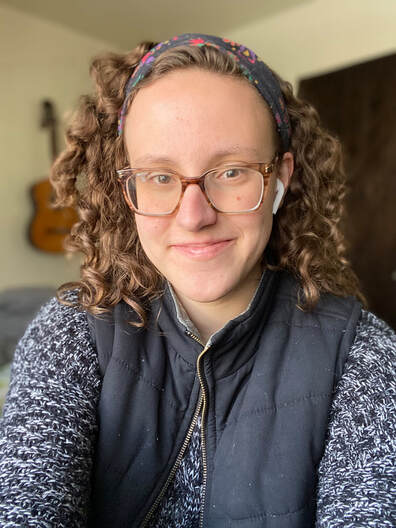
As a high school student in Louisville, Kentucky, I had the privilege of playing in a string quartet with three very talented classmates, all of whom have gone on to lives in music—one a fellow at the New World Symphony, one a violin teacher in Urbana-Champaign, and one a frequent performer with indie-Americana group Rebecca Rego and the Trainmen (all among other pursuits). For two years, in between AP classes, we tackled chamber music repertoire that was always a little bit over our heads and formative for us as musicians and as people.
We spent a long time with Beethoven’s Quartet No. 10 in E-flat Major, the “Harp” quartet. Its first movement exemplifies the heroic qualities found in other middle period works, like a constant contrast between somber and exuberant moods and an ultimately triumphant conclusion. We took to performing that movement at school fundraisers and in the corner of art galleries, my first experiences “gigging.” The movement opens with a somber adagio that is not thematically tied to the rest of the work. It then introduces two primary themes: a lyrical melody, beginning with the first violin in the third bar of the allegro, and a series of interchanged pizzicato figures like the plucking of a harp.
At the end of the first movement, Beethoven masterfully combines the lyrical melody from the allegro with the pizzicato “Harp” motive for a powerful conclusion. The realization that these themes were meant to be played simultaneously all along is a master class in contrapuntal writing and in the management of musical tension. But my favorite thing about this climax is that its melodic drive blossoms not from the first violin or cello as you might expect, but from the inner voices. That heroic line, traded off between the second violin and viola beneath the first violin’s blistering arpeggios, was Beethoven’s gift to a young violist. And although my quartet-mates and I shared many deep adolescent thoughts during that time—from love to punk music to politics—I will always remember those climactic measures of Quartet No. 10 as the most profound conversation we ever had.
We spent a long time with Beethoven’s Quartet No. 10 in E-flat Major, the “Harp” quartet. Its first movement exemplifies the heroic qualities found in other middle period works, like a constant contrast between somber and exuberant moods and an ultimately triumphant conclusion. We took to performing that movement at school fundraisers and in the corner of art galleries, my first experiences “gigging.” The movement opens with a somber adagio that is not thematically tied to the rest of the work. It then introduces two primary themes: a lyrical melody, beginning with the first violin in the third bar of the allegro, and a series of interchanged pizzicato figures like the plucking of a harp.
At the end of the first movement, Beethoven masterfully combines the lyrical melody from the allegro with the pizzicato “Harp” motive for a powerful conclusion. The realization that these themes were meant to be played simultaneously all along is a master class in contrapuntal writing and in the management of musical tension. But my favorite thing about this climax is that its melodic drive blossoms not from the first violin or cello as you might expect, but from the inner voices. That heroic line, traded off between the second violin and viola beneath the first violin’s blistering arpeggios, was Beethoven’s gift to a young violist. And although my quartet-mates and I shared many deep adolescent thoughts during that time—from love to punk music to politics—I will always remember those climactic measures of Quartet No. 10 as the most profound conversation we ever had.
Jalen Lee graduated with a Bachelor of Music in 2015 and an Artist Diploma in 2017 from the University of Cincinnati College-Conservatory of Music. She studied with Catherine Carroll-Lees and Masao Kawasaki and also attended the Aspen Music Festival as a viola student for several years. In 2017, she was honored to join the Aspen Music Festival’s year-round staff as Manager of Admissions and Student Affairs. Jalen enjoys playing viola with the High Country Sinfonia and teaching young students in the AMFS Beginning Strings program.
As reflected in the Jalen’s closing comment, making music in ensemble is a profound conversational experience. For your listening pleasure, I suggest the Orion String Quartet performance of String Quartet No. 9 in C major, Op. 59 No. 3.
As reflected in the Jalen’s closing comment, making music in ensemble is a profound conversational experience. For your listening pleasure, I suggest the Orion String Quartet performance of String Quartet No. 9 in C major, Op. 59 No. 3.
Fall 2020
‘Nature brings about a destruction in order to bring forth anew’, wrote Schiller. Covid-19 has
certainly presented a challenge to the library in bringing forth anew, especially for the live music
series. But the word of the day is JOY!!! I am delighted to announce the Basalt Regional
Library is launching our Virtual Fall Music Series in an attempt to once again provide excellent
music from your library.
‘Nature brings about a destruction in order to bring forth anew’, wrote Schiller. Covid-19 has
certainly presented a challenge to the library in bringing forth anew, especially for the live music
series. But the word of the day is JOY!!! I am delighted to announce the Basalt Regional
Library is launching our Virtual Fall Music Series in an attempt to once again provide excellent
music from your library.
In collaboration with Grass Roots TV, we have scheduled broadcasts of local musicians in pre-
recorded concerts to be aired on Thursday evenings @ 5:30 pm, starting in September and
continuing through December, 2020. I will be hosting these concerts filmed in the Community
Room; so instead of coming to the library for a excellent concert, just tune into Grass Roots TV
and enjoy the concert from the comfort of your home.
The series will be initiated by the Lenore Raphael Quartet on Thursday, September 24.
Although Lenore is not a resident of our community, her name is immediately recognized in the
jazz community as an international Steinway jazz pianist of high accomplishments. For several
years, she has been invited annually to perform concerts on our series. This year she will be
joined with the sounds of saxophone, vibes, and drums to bring a unique jazz experience to our
ears.
We are fortunate to be able to host Amanda Gessler, pianist, in the performance of
Beethoven’s late Piano Sonatas Op 109 and 111 on Thursday, October 15. Amanda has
recently studied Beethoven’s late piano sonatas under concert pianist, Richard Goode, NYC,
and is presently a candidate for the Doctor of Musical Arts degree at University of Colorado
Boulder.
.
“Broadway to Jazz” will bring early joy to your Thanksgiving holidays on Thursday, November
19. Local performers Cathy Markle, Mike Monroney, David Dyer and Steve Cole will
captivate you with their rendition of songs from Broadway musicals that became jazz standards.
No December can pass without the sounds of the Roaring Fork Youth Orchestra performing
seasonal songs for us. To carry on the tradition, a selected chamber group and their
mentors/teachers will perform the familiar songs from many traditions on Thursday, December
17.
I send my sincere thanks for your continued support of the library’s music series. As I reminded
you in my cancellation statement, ‘without you there would be no series’. Together, let us
continue to meet the challenge of maintaining excellence in the interaction of crisis and
creativity. Please mark your calendars and view our series on Grass Roots TV on Thursdays of
each month at the usual hour, 5:30 pm.
- Charlotte McLain
recorded concerts to be aired on Thursday evenings @ 5:30 pm, starting in September and
continuing through December, 2020. I will be hosting these concerts filmed in the Community
Room; so instead of coming to the library for a excellent concert, just tune into Grass Roots TV
and enjoy the concert from the comfort of your home.
The series will be initiated by the Lenore Raphael Quartet on Thursday, September 24.
Although Lenore is not a resident of our community, her name is immediately recognized in the
jazz community as an international Steinway jazz pianist of high accomplishments. For several
years, she has been invited annually to perform concerts on our series. This year she will be
joined with the sounds of saxophone, vibes, and drums to bring a unique jazz experience to our
ears.
We are fortunate to be able to host Amanda Gessler, pianist, in the performance of
Beethoven’s late Piano Sonatas Op 109 and 111 on Thursday, October 15. Amanda has
recently studied Beethoven’s late piano sonatas under concert pianist, Richard Goode, NYC,
and is presently a candidate for the Doctor of Musical Arts degree at University of Colorado
Boulder.
.
“Broadway to Jazz” will bring early joy to your Thanksgiving holidays on Thursday, November
19. Local performers Cathy Markle, Mike Monroney, David Dyer and Steve Cole will
captivate you with their rendition of songs from Broadway musicals that became jazz standards.
No December can pass without the sounds of the Roaring Fork Youth Orchestra performing
seasonal songs for us. To carry on the tradition, a selected chamber group and their
mentors/teachers will perform the familiar songs from many traditions on Thursday, December
17.
I send my sincere thanks for your continued support of the library’s music series. As I reminded
you in my cancellation statement, ‘without you there would be no series’. Together, let us
continue to meet the challenge of maintaining excellence in the interaction of crisis and
creativity. Please mark your calendars and view our series on Grass Roots TV on Thursdays of
each month at the usual hour, 5:30 pm.
- Charlotte McLain

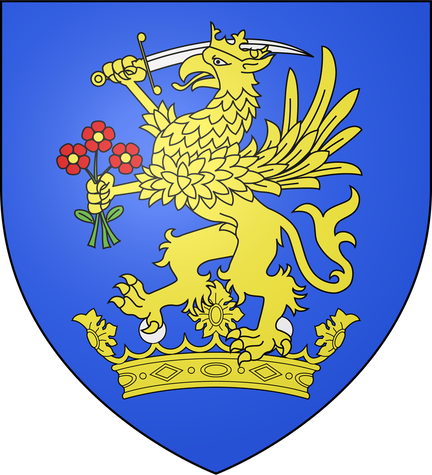
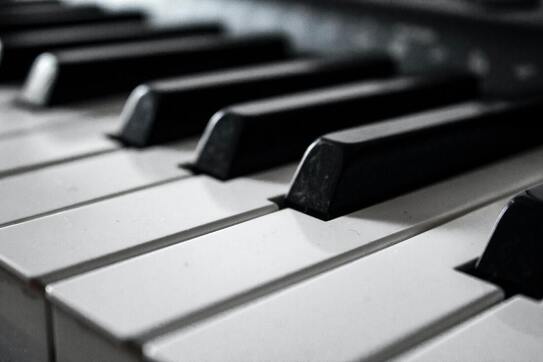
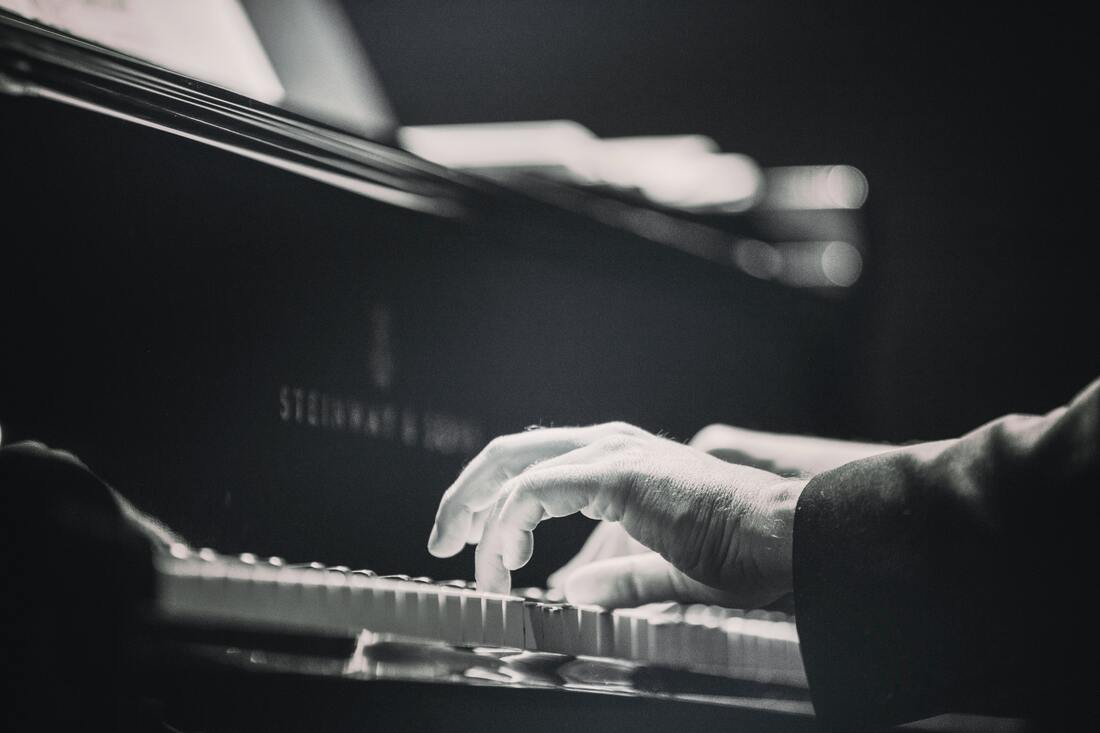
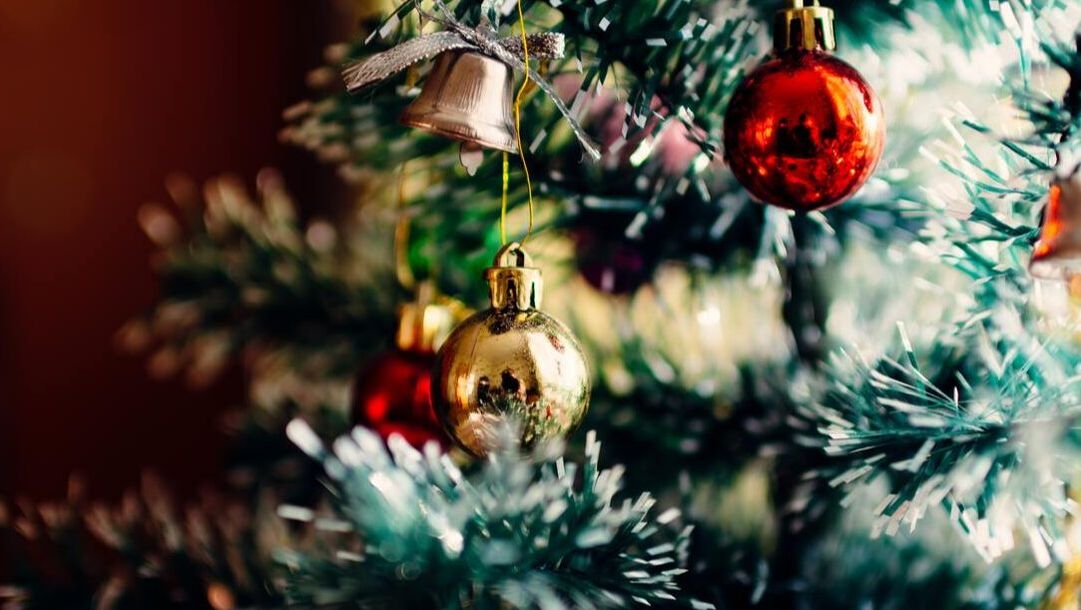
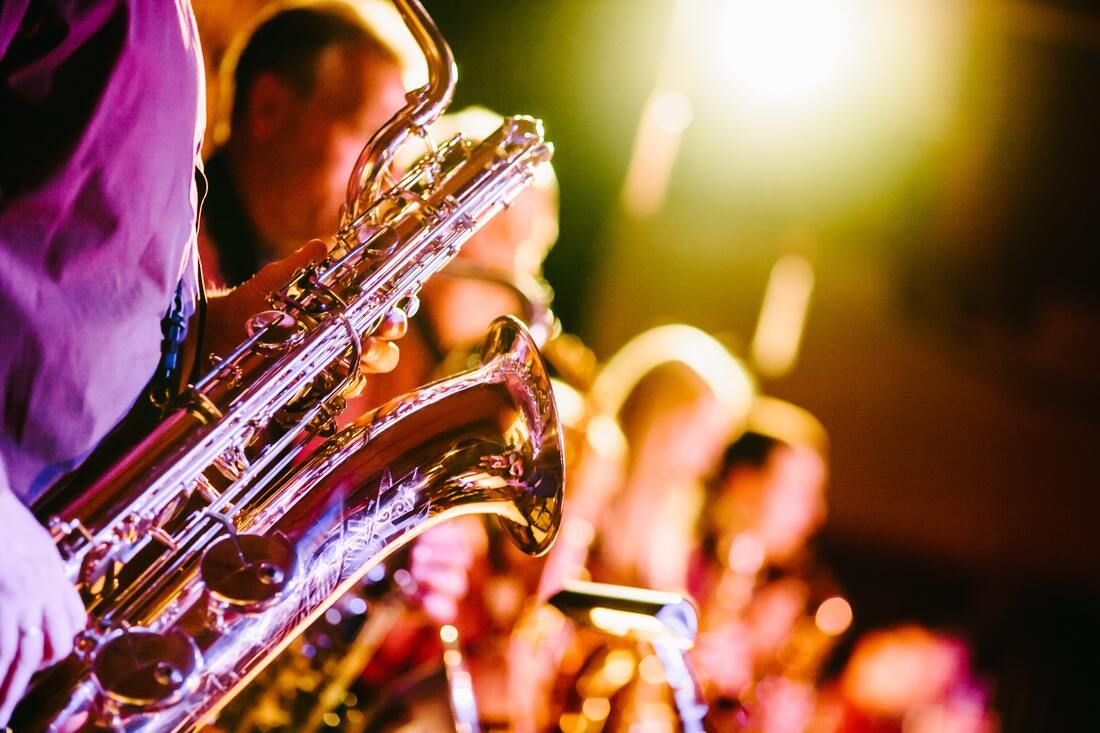
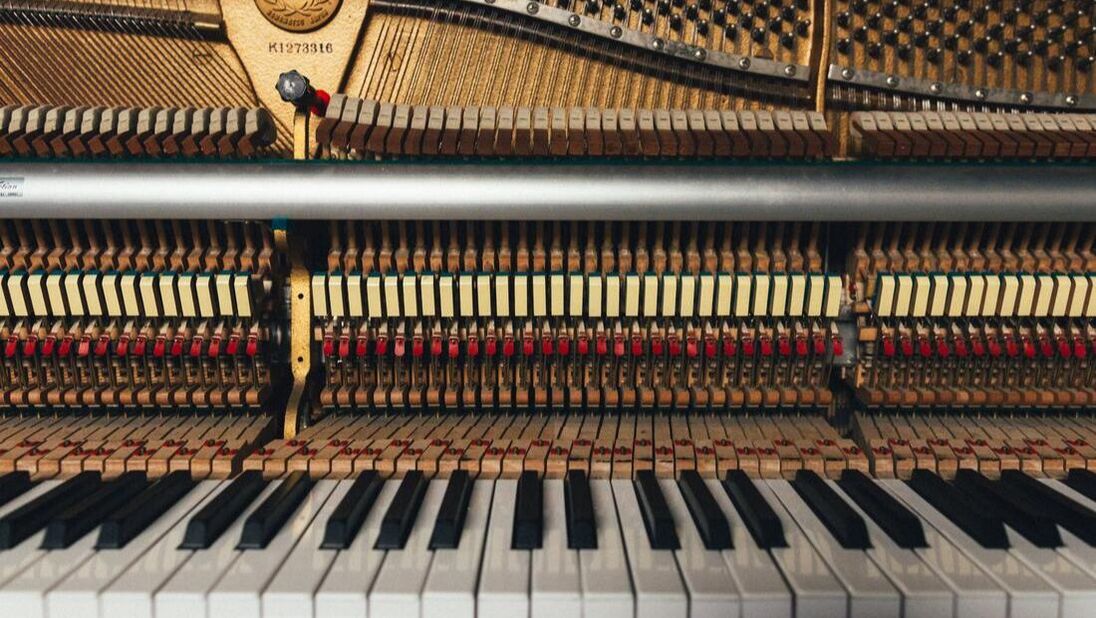
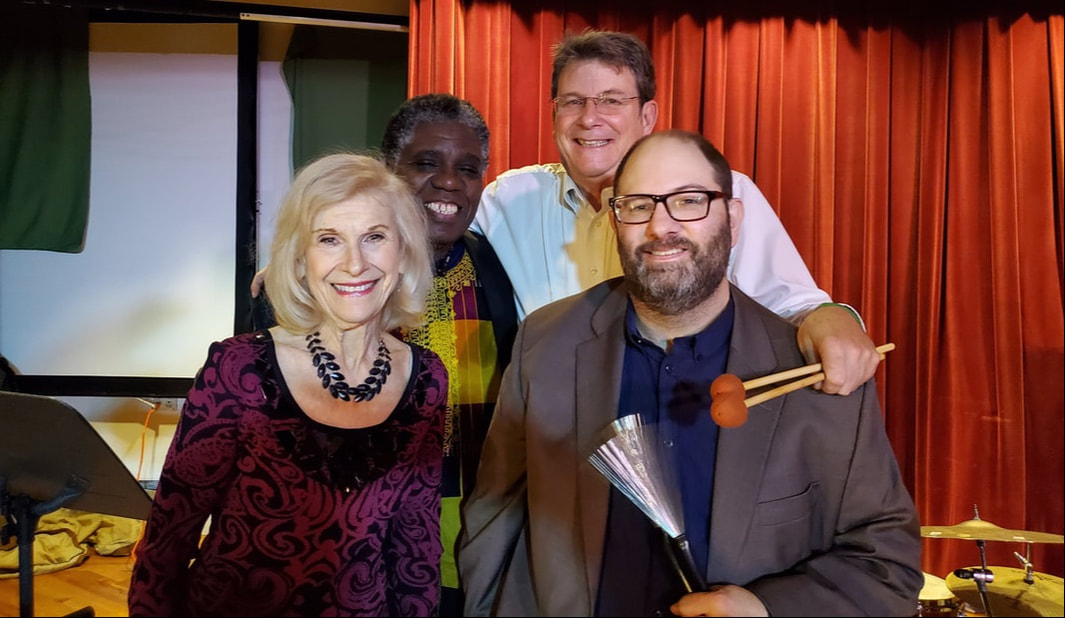
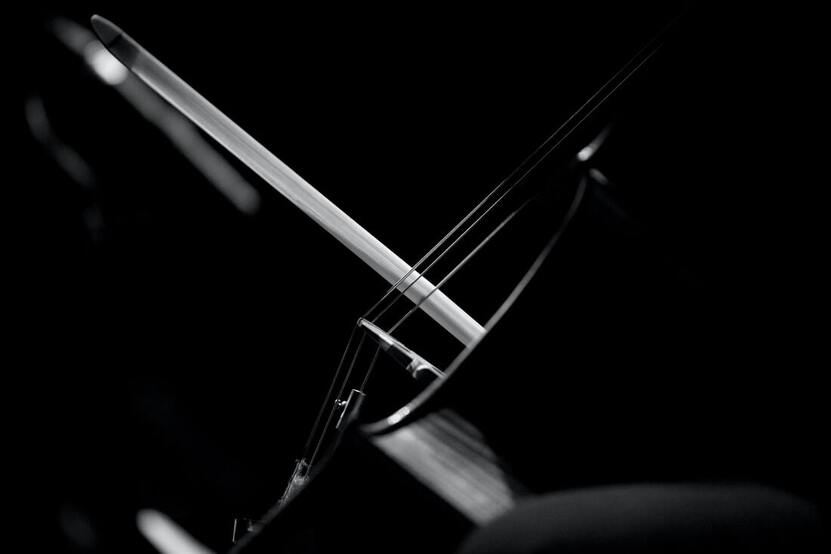
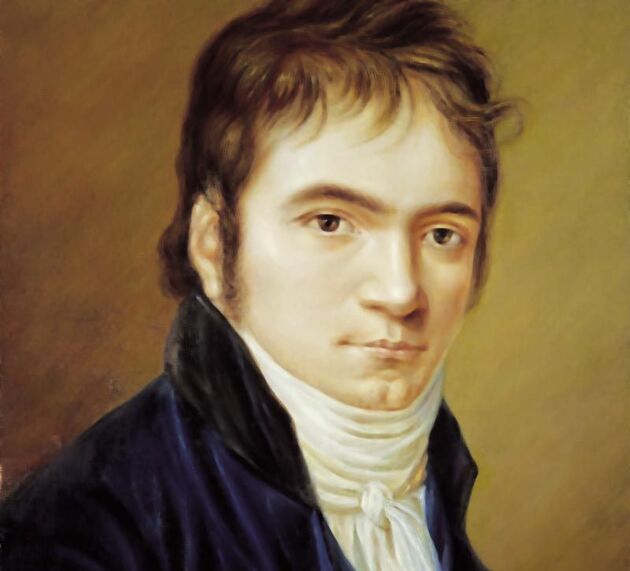
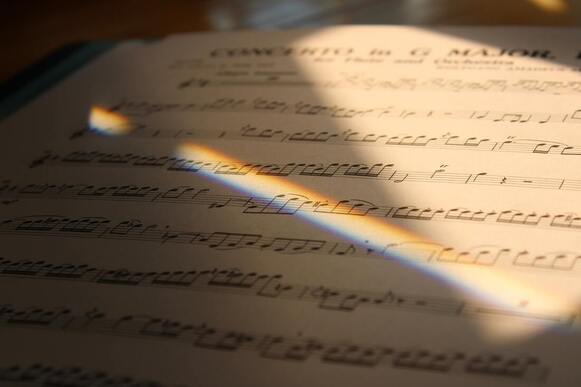
 RSS Feed
RSS Feed
